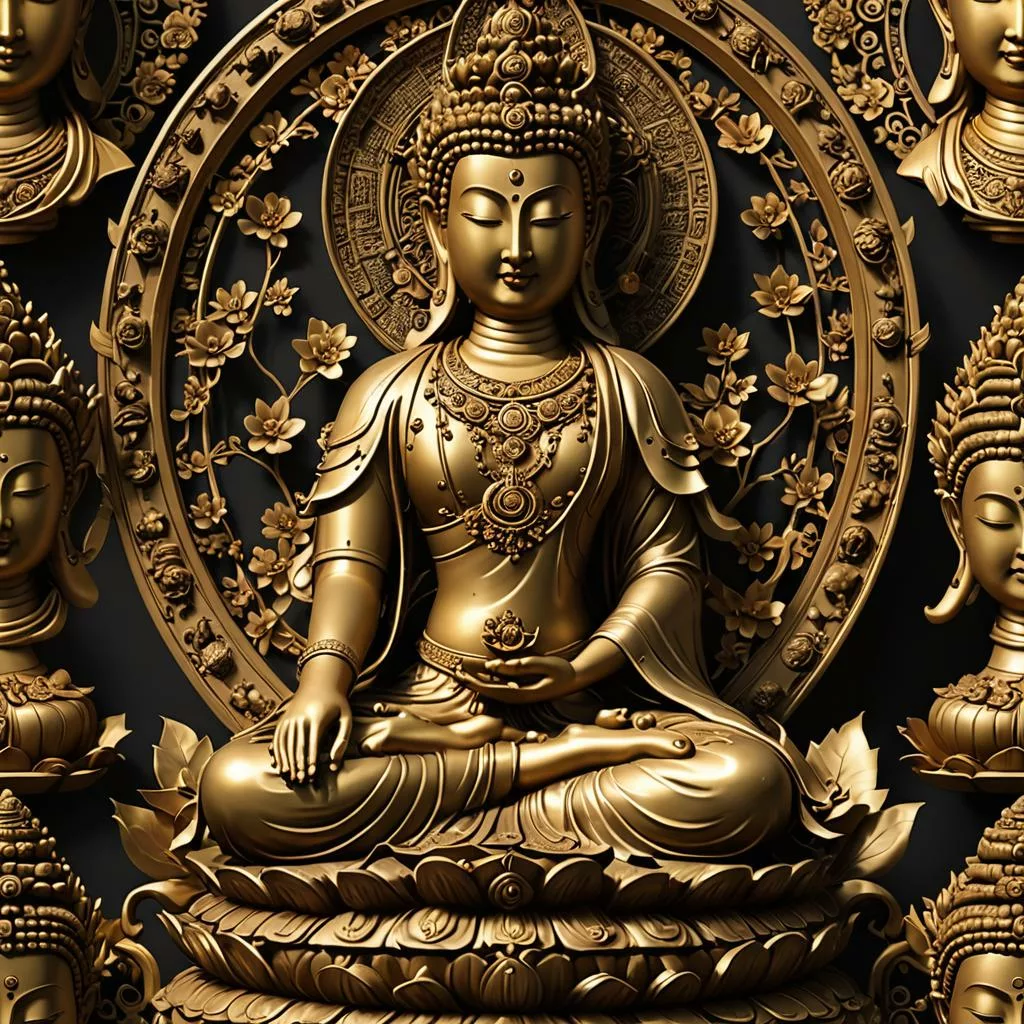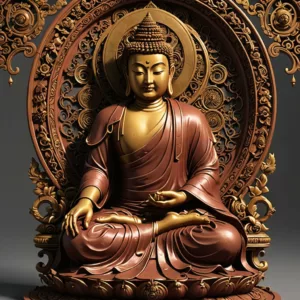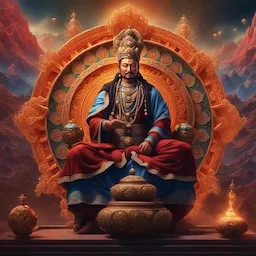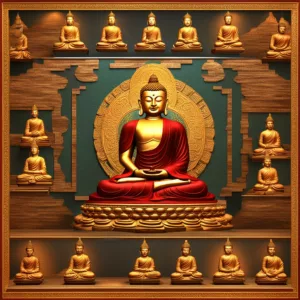
Tonglen means Sending and Receiving. It is a core Mahayana meditation in the Tibetan system. The meditator mentally draws in others suffering with the inbreath and sends out peace and happiness on the outbreath.
I always had a hard time with sending and receiving. One teacher I read said that it’s somewhat disagreeable. It’s just not easy. On the other hand, we have to do a fair bit of it for ngöndro, so I found some enjoyment in the practice. Tonglen can be very deep, for want of a better word. Since it comes from the heart and rides the breathing process, it’s not that hard to get some stability on it.
I was once in a situation with a very troubled German fellow. He was quite intoxicated and expressing some kind of poorly expressed pain and anger or frustration. I listened for a few minutes, wanting to leave actually, but I didn’t. I couldn’t find anything else to do, so I just did some tonglen. He immediately said, “Suddenly, I feel better now.”
I don’t know quite what to make of that, but to me, it said – this actually works. Try it for yourself and see.
Secrets of Meditation for Anxiety
Like millions of people, you may have suffered from anxiety for years. Meditation, yoga, peaceful music – it never works. It takes too long, and it’s not stable. Why? Because peace is treated as a cause for freedom, but it’s not – it’s the result. The cause to free yourself from anxiety is completely different.
Click now to Overcome Anxiety for good.
Table of Contents
Tonglen Summary
Summary: Tonglen Meditation Practice
Central Node: Tonglen Meditation Practice (Taking and Giving)
Properties:
- Origin: Tibetan Buddhism (possibly earlier roots in Indian Mahayana Buddhism)
- Core Technique: Visualization during inhalation and exhalation
- Purpose: Cultivate compassion, reduce self-centeredness, transform negativity
- Lineage Figures: Gampopa (Kagyu), Milarepa (Kagyu), Marpa Lotsawa (Kagyu), Longchenpa (Nyingma), The Dalai Lama (Tenzin Gyatso – Gelug)
Related Entities:
- Traditions: Kagyu, Nyingma, Gelug (Tibetan Buddhism)
- Concepts: Compassion (karuna), Bodhicitta (awakened mind), Suffering (dukkha), Emptiness (shunyata)
Process:
- Visualization (Inhalation): Inhale and visualize the suffering of others (pain, fear, sadness) as smoke or darkness entering your body.
- Transformation: As you inhale, visualize the suffering being transformed and purified within you.
- Exhalation: Exhale and radiate love, peace, and well-being towards the person or situation (as a radiant light).
Benefits:
- Increased Compassion and Empathy for oneself and others
- Reduced Selfishness and Ego
- Constructive Transformation of Difficult Emotions
Additional Notes:
- Tonglen can be practiced formally in meditation or informally throughout the day.
- It is a gradual practice that takes time and effort to develop.
Resources:
What is Tonglen?
Tonglen, also known as “taking and giving” is a powerful meditation practice in Tibetan Buddhism that cultivates compassion. It’s a core teaching found in Shantideva’s “A Guide to the Bodhisattva’s Way of Life” (Bodhicharyavatara). Tonglen is related to metta meditation.
Here’s how it works:
- Visualization: Imagine yourself inhaling the suffering of others, such as their pain, fear, or sadness. It can be someone you know who is struggling, or a more general sense of suffering in the world.
- Transformation: As you inhale, visualize the suffering transforming into smoke or darkness.
- Exhalation: On the exhale, imagine radiating love, peace, and well-being towards that person or situation. You can visualize this as a radiant light.
The Purpose of Tonglen:
- Develop Compassion: By taking on the suffering of others (even if symbolically), you cultivate empathy and a genuine desire to alleviate their pain.
- Reduce Self-Centeredness: Tonglen helps us move beyond our own worries and anxieties to focus on the needs of others.
- Transform Negativity: By visualizing the suffering as something impermanent that can be transformed, tonglen offers a way to deal with difficult emotions constructively.
Practicing Tonglen:
Tonglen can be practiced formally during meditation or informally throughout the day. Here are some tips:
- Start Small: Begin by focusing on a specific person or situation that evokes compassion in you.
- Be Gentle: Don’t overwhelm yourself by taking on too much suffering at once.
- Focus on the Breath: Use your breath as an anchor, inhaling suffering and exhaling compassion with each breath.
Remember: Tonglen is a practice, and like any skill, it takes time and effort to develop. Be patient with yourself and keep practicing!
How to meditate like a yogi
and enter profound samadhi
Is tonglen dangerous?
No. You would have to generate a serious fantasy based on harming yourself through it in order for it to be dangerous. But this is like asking if drinking water is dangerous – if you drink a gallon at once, yes it is!
The fear is that drawing in others pain, we will generate that suffering in ourselves. By drawing in all the pain, we would be overwhelmed. But the pain is empty. You can’t actually take in pain in that way as pain. What you’re taking in is the negative thought of pain. However, knowing that it’s empty will protect you from any harm.
But what if I do it without understanding that it’s empty? Then you won’t be able to draw any suffering out of anyone. In order for legitimate benefit to occur, to actually remove someone’s pain, we would have to understand that it is essentially empty. Otherwise, we will be unable to overcome the seeming separation between ourselves and others. The protection works either way!
Tonglen Practice
To do tonglen, settle into shamatha for a bit. Rouse absolute bodhicitta – the desire to see the ultimate reality and unite with wisdom. Use vipassana to open your mind to emptiness. This will delimit the mind and ensure that the practice is effective.
Consider a situation of profound suffering you have witnessed. Allow it move your compassion. Avoid pity by knowing it is also you in another life. Deepen the compassion. As you breathe in, pull in the suffering of the situation to your heart center in the form of black clouds. Purify the suffering in emptiness and return the essence as clear, white light. This light is goodness, happiness, joy, contentment, and wisdom. Anything good the being needs.
Expand the process to include more and more beings, eventually every being in the universe. Continue the process for as long as it makes sense. You can do a ritual gong roll down twice, then a full stop to end it, if you like. This signifies the nobility of doing tonglen.
Conclude with a period of shamatha and dedication of merit.



Lineage Figures Associated with Tonglen Meditation Practice
| Figure | Tradition | Time Period | Significance in Tonglen Practice |
|---|---|---|---|
| Gampopa (Sönam Rinchen) | Kagyu | 1079–1153 CE | – Credited with introducing Tonglen to the Kagyu lineage. – Emphasized its role in cultivating compassion and bodhicitta (the awakened mind). |
| Milarepa | Kagyu | 1040–1123 CE | – Famous Tibetan yogi and poet known for integrating Tonglen into his meditation practice. – His life story highlights the transformative power of Tonglen. |
| Marpa Lotsawa | Kagyu | 1012–1097 CE | – Translated numerous Buddhist texts from Sanskrit into Tibetan, including teachings on Tonglen. – Played a crucial role in transmitting the practice to future generations. |
| Longchenpa | Nyingma | 1308–1363 CE | – Renowned Nyingma scholar and meditation master. – Wrote extensively about Tonglen, emphasizing its role in Dzogchen practice (a path to enlightenment within the Nyingma tradition). |
| The Dalai Lama | Gelug | 14th Dalai Lama: Tenzin Gyatso (born 1935) | – Actively teaches Tonglen meditation as a method for cultivating compassion and inner peace. – His emphasis on Tonglen contributes to its widespread recognition in the modern world. |
| Pema Chodron | Kagyu/ Nyingma | American Nun | Well-known American nun, author of many books on Mahayana Buddhism. |
- This table highlights some key figures associated with Tonglen practice. The development and transmission of the practice likely involved many other teachers and lineages throughout Tibetan Buddhist history.
- The specific lineages listed here (Kagyu, Nyingma, and Gelug) are all Tibetan Buddhist traditions. Tonglen is also practiced in other forms of Buddhism, but the lineage figures may differ.

May all beings be happy
May all beings be peaceful
May all beings be safe
May all beings awaken to the light of their true nature
May all beings be free







